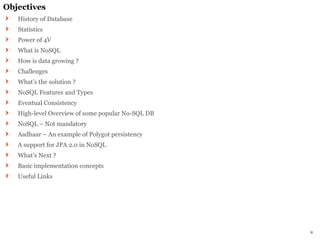The document provides an overview of NoSQL databases, discussing their history, features, and the challenges they address compared to traditional relational databases. It emphasizes the rapid growth of data and the need for scalable solutions capable of handling unstructured data without strict ACID compliance. Key types of NoSQL databases, such as document, key/value, and graph databases, as well as notable implementations by major companies like Facebook and Google, are also highlighted.












































